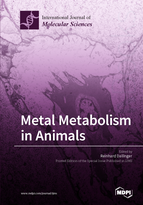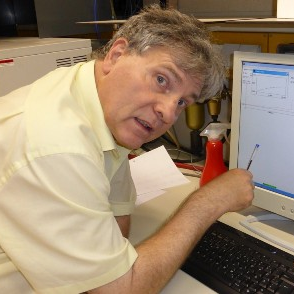Metal Metabolism in Animals
A special issue of International Journal of Molecular Sciences (ISSN 1422-0067). This special issue belongs to the section "Biochemistry".
Deadline for manuscript submissions: closed (29 February 2016) | Viewed by 107044
Special Issue Editor
Interests: environmental toxicology and ecotoxicology; molecular physiology; microevolution of metal sensitivity; evolution; biochemistry and gene regulation of metallothioneins; metal-specific pathways in animal physiology; metal detoxification; metal-related biological indicators and biomarkers
Special Issues, Collections and Topics in MDPI journals
Special Issue Information
Dear Colleagues,
Metal metabolism in animals has been in the spotlight for more than 100 years. Never before, however, has the opportunity to shed light on metal interactions and their implications been as promising as it is today. Several important insights and achievements may have contributed to this development. One important step has been the realization that intracellular concentrations and activities of metal ions are strictly controlled by the cell, with the consequence that intracellular free metal ion levels are regulated at very low concentrations. On the other hand, metal ions are dynamically involved in cellular processes through continuous beneficial, or detrimental, interaction with intracellular ligands, co-factors and metabolites. The improvement of analytical techniques has greatly assisted in the discovery of these insights. However, our understanding of metal interactions with biological systems has been most notably expanded by the sophistication of molecular biology tools and bioinformatics. One of the most promising developments is the new integrative approach of metallomics, which spans the entirety of metal interactions with living systems, including their environmental interdependencies.
In this light, study of metal interactions in animals and animal cells offer the exciting possibility of resolving many molecular, biochemical, physiological and environmental questions which remain open. The present issue aims at bringing together, under a metallomics perspective, important contributions to the field of metal metabolism in animals.
In particular, we welcome topics covering:
- Regulation and control of metal ion concentrations in subcellular, cellular and tissue-specific compartments of animals, with special emphasis on the interaction of metals with extra and intracellular ligands, metabolites and co-factors;
- Mechanisms of metal ion transport, sensing, storage and detoxification in animals, and biomolecules involved in these processes;
- Role of metal ions in molecular signaling pathways within the animal cell, involving interactions with transcription factors and genes;
- Shedding light on the functional aspects of metal metabolism in animals by applying genomic, proteomic and bioinformatic approaches;
- Adverse and toxic effects of metal ions towards important cellular processes and pathways, from molecular to the organismic level;
- Detrimental interactions of metal ions through the formation of reactive oxygen species in animal cells, and cellular strategies to overcome these effects;
- Metal ion speciation and biological availability in the environment and implications for processes of metal uptake and balance within animal cells;
- Trans-generational effects of metals, with emphasis on epigenetic mechanisms and their implications;
- Any other topic focusing, in an integrative manner, on metal metabolism in animals, by addressing molecular and physiological aspects.
Prof. Dr. Reinhard Dallinger
Guest Editor
Manuscript Submission Information
Manuscripts should be submitted online at www.mdpi.com by registering and logging in to this website. Once you are registered, click here to go to the submission form. Manuscripts can be submitted until the deadline. All submissions that pass pre-check are peer-reviewed. Accepted papers will be published continuously in the journal (as soon as accepted) and will be listed together on the special issue website. Research articles, review articles as well as short communications are invited. For planned papers, a title and short abstract (about 100 words) can be sent to the Editorial Office for announcement on this website.
Submitted manuscripts should not have been published previously, nor be under consideration for publication elsewhere (except conference proceedings papers). All manuscripts are thoroughly refereed through a single-blind peer-review process. A guide for authors and other relevant information for submission of manuscripts is available on the Instructions for Authors page. International Journal of Molecular Sciences is an international peer-reviewed open access semimonthly journal published by MDPI.
Please visit the Instructions for Authors page before submitting a manuscript. There is an Article Processing Charge (APC) for publication in this open access journal. For details about the APC please see here. Submitted papers should be well formatted and use good English. Authors may use MDPI's English editing service prior to publication or during author revisions.
Keywords
- Molecular Physiology
- Bioaccumulation and Biotoxicity
- Oxidative Stress and Reactive Oxygen Species
- Metal Turnover, Metabolism and Regulation
- Metal Transporter
- Metal Sensing, Signaling and Reactions
- Analytical Techniques
- Metallochaperone, Metalloprotein, Metallothionein and the alike
- Organometallics
- Chelation, Chelator, Complexation, Complex Formation
- Metal Detoxification, Sequestration and Compartmentalization
- Functional Genomics and Proteomics
- Transcriptional Regulation and Transcription Factors







